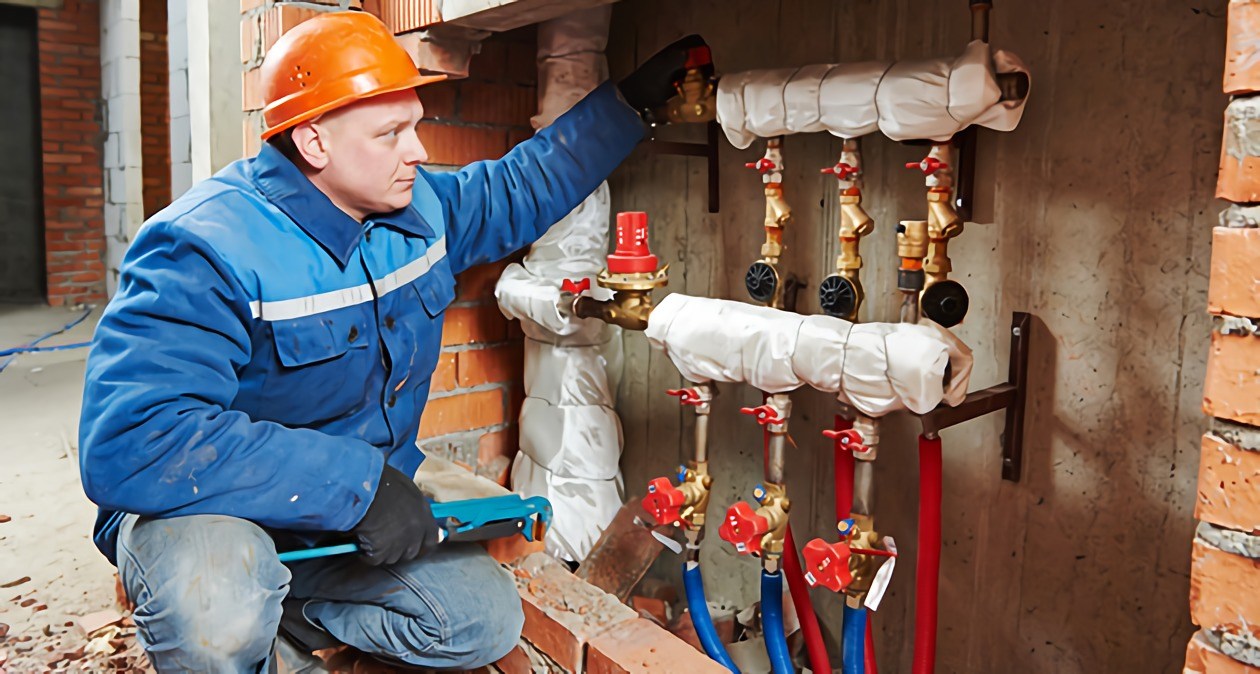
A career in HVAC can be rewarding but, as with any line of work, there are hazards. Proper training and preparation, as well as adherence to federal safety regulations, is key to preventing serious injury in the event of an accident. In this article you’ll learn more about what you can do to stay safe on the job.
HVAC Safety Regulations
The Occupational Safety and Health Administration (OSHA) has safety regulations that are specific to HVAC and that provide guidance on how to handle the following dangerous events:
- How to handle hazardous materials.
- The standards surrounding machinery usage and machine guarding requirements.
- What respiratory protection to use.
- How to avoid strains and back injuries by understanding ergonomics.
- How to safely enter confined spaces.
- Working with electricity.
- Understanding evacuation, trenching and soil removal dangers.
- How to avoid fall injuries.
These safety regulations prepare HVAC technicians for the various injuries that can occur while on the job. For example, sheet-metal cuts can occur during duct renovations or new installations; welding while working on heating systems can result in burns; and technicians can be exposed to airborne pathogens while repairing HVAC systems if they fail to wear proper safety gear. Every HVAC worker needs to know the safety procedures for the job tasks he or she will perform.
HVAC Safety Training
While studying HVAC at a vocational school, aspiring technicians learn safety guidelines and receive proper training before they enter the field. Below are some of the safety skills HVAC technicians should possess:
- The ability to identify potential hazards on the job site and address or avoid them.
- Knowledge of the proper type of protective gear to wear for the given task.
- Understanding of the proper use of respirators.
- Grasp of the importance of protective gear.
- The ability to read and follow manufacturer safety labels.
- Awareness of which chemicals in the work environment are hazardous and correct procedures for handling them.
- Use of cautionary measures when working with electrical equipment.
In comparison with other occupations, HVAC technicians have a higher rate of injuries. Potential injuries 1 include shocks from electrical connections, burns, and straining the muscles or back when working with heavy equipment. HVAC refrigeration technicians face exceptional risk: the extreme low temperatures may damage the skin upon contact and some are extremely flammable. Inhalation of refrigerants is especially dangerous and special care should be taken when working with these toxic substances in confined spaces. Proper HVAC technician training can help prepare for such risks and avoid harm on the job.
Get Started on the Path to a New Career
Fill out our form to learn how we can help you change your life.
HVAC Safety Gear
Accidents can happen to anyone, even the most well-trained and experienced HVAC technicians. When they do occur, protective gear can help prevent or minimize injury. Here are some examples of necessary protective gear to wear while working:
- Face shields and safety glasses to protect the eyes and face.
- Gear to protect from radiant energy.
- Respiratory gear.
- Head protection (hardhat) to prevent injury from falling debris.
- Ear protection to avoid hearing loss.
- Gloves to protect the hands from injury.
- Correct footwear.
- Proper protective clothing to prevent injury from temperature extremes.
HVAC First Aid
While medical professionals should always be called for serious accidents, there are some simple steps you can take to render first aid if the injury is not severe or until help arrives. Below are some techniques for common HVAC injuries:
- Wound Care: For minor cuts use soap and water to wash the wound then rinse it with clean water. For major gashes, apply pressure with a towel or bandage to stop blood flow until help arrives.
- Burn Care: In the event of a temperature burn, rinse the area with cold, not ice, water. In the case of chemical burns, flush the area with water for twenty minutes.
- Heat Sickness: Have the person lie down in a cool place and give him or her cold water.
Special First Aid Kits are also available for HVAC technicians. These Contractors First Aid Kits are doctor-recommended and comply with California’s strict guidelines for construction. In addition, HVAC technicians can learn more about how to respond to injury and accident on the job by reading OSHA’s Best Practices Guide: Fundamentals of Workplace First-Aid Program.
HVAC: A Hands-On Career Path
As a hands-on career in which individuals may work with electricity, extreme temperatures and dangerous chemicals, the potential hazards of HVAC can be properly mitigated through comprehensive safety training and strict adherence to safety practices during all work hours. Anyone wishing to enter this growing field can benefit from receiving proper training from an accredited vocational school. To learn more about starting on your path to becoming an HVAC professional, contact The Refrigeration School today.
Additional Sources
1. http://www.bls.gov/ooh/installation-maintenance-and-repair/heating-air-conditioning-and-refrigeration-mechanics-and-installers.htm#tab-3
This blog has been labeled as archived as it may no longer contain the most up-to-date data. For a list of all current blog posts, please visit our blog homepage at https://www.rsi.edu/blog/

